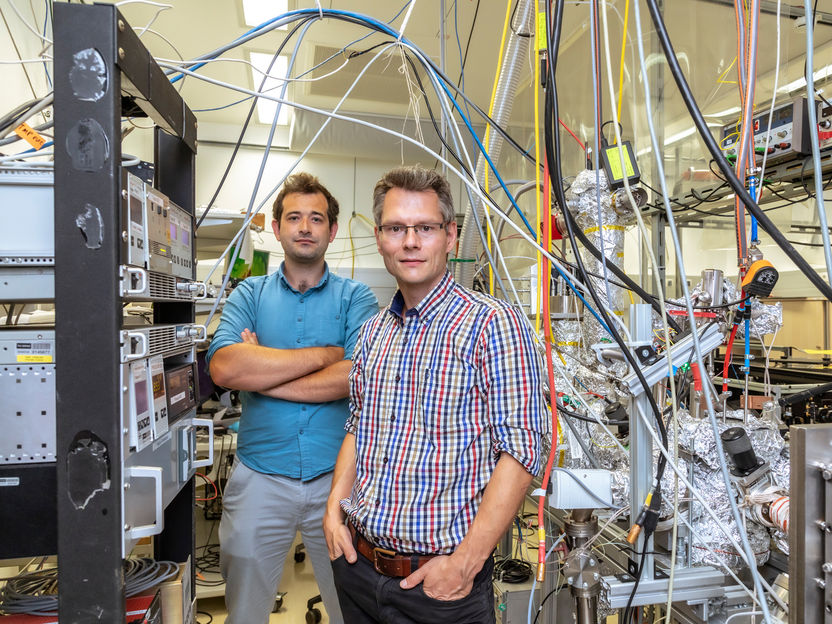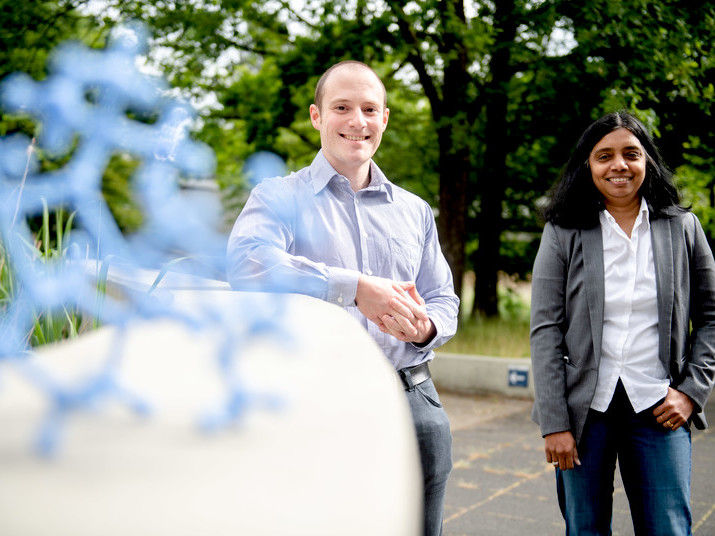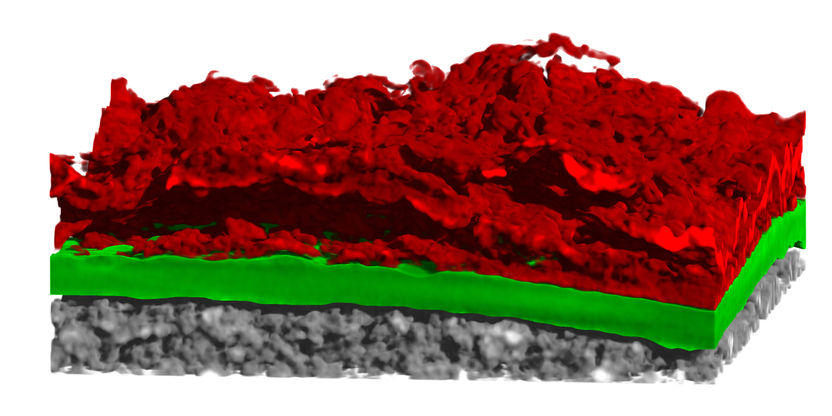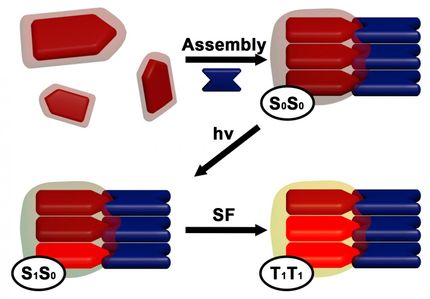Electrons in quantum liquid gain energy from laser pulses
The findings open new doors for ultra-fast electron microscopy
The absorption of energy from laser light by free electrons in a liquid has been demonstrated for the first time. Until now, this process was observed only in the gas phase. The findings, led by Graz University of Technology, open new doors for ultra-fast electron microscopy.

Leonhard Treiber, here with doctoral supervisor Markus Koch (right) made the discovery as part of his thesis at TU Graz.
Lunghammer – TU Graz
The investigation and development of materials crucially depends on the ability to observe smallest objects at fastest time scales. The necessary spatial resolution for investigations in the (sub-)atomic range can be achieved with electron microscopy. For the most rapid processes, however, proceeding within a few femtoseconds (quadrillionths of a second), the time resolution of conventional electron microscopes is insufficient. To improve the time duration of electron pulses, electrons would have to be selected within a shorter time window – in analogy to a camera shutter, which controls the exposure time in photography.
In principle, this temporal selection is possible with extremely short laser pulses through a process called laser-assisted electron scattering (LAES). In this process, electrons can absorb energy from the light field during collisions with atoms of the sample under investigation. "Structural information is provided by all electrons, but those that have a higher energy level can be assigned to the time window in which the light pulse was present. With this method, it is possible to select a short time window from the long electron pulse and thus improve the time resolution," explains Markus Koch, professor at the Institute of Experimental Physics at Graz University of Technology. So far, however, LAES processes have only been observed in the gas phase, despite their investigation for about 50 years.
Markus Koch and his team, in collaboration with researchers from Photonics Institute at Vienna University of Technology and the Institute of Chemistry at Tokyo Metropolitan University, have now demonstrated for the first time that laser-assisted electron scattering can also be observed in condensed matter, specifically in superfluid helium.
Superfluid helium leading to success
The TU Graz researchers performed the experiment in a superfluid helium droplet of few nanometer diameter (3-30 nm), into which they loaded single atoms (indium or xenon) or molecules (acetone) that served as an electron source – a field of expertise at the institute. "The free electrons can move almost without friction within the droplet and absorb more energy in the light field than they lose in collisions with the helium atoms," says Leonhard Treiber, the PhD student in charge of the experiment. The resulting acceleration allows for the observation of much faster electrons.
The experiments could be interpreted in cooperation with Markus Kitzler-Zeiler, an expert for strong-field processes at TU Wien, and the LAES process was confirmed through simulations by Reika Kanya from Tokyo Metropolitan University. The results were published in Nature Communications.
In the future, the LAES process will be studied within thin films of various materials, also produced inside helium droplets, in order to determine important parameters such as the optimal film thickness or the favourable intensity of the laser pulses for application in an electron microscope.
Original publication
Other news from the department science

Get the chemical industry in your inbox
By submitting this form you agree that LUMITOS AG will send you the newsletter(s) selected above by email. Your data will not be passed on to third parties. Your data will be stored and processed in accordance with our data protection regulations. LUMITOS may contact you by email for the purpose of advertising or market and opinion surveys. You can revoke your consent at any time without giving reasons to LUMITOS AG, Ernst-Augustin-Str. 2, 12489 Berlin, Germany or by e-mail at revoke@lumitos.com with effect for the future. In addition, each email contains a link to unsubscribe from the corresponding newsletter.
Most read news
More news from our other portals
Last viewed contents

An unusual cobalt compound - Interesting for applications in the field of battery or accumulator production
Harvey_Bialy
Category:Biofuel_power_stations_in_England
Category:Romanian_chemists




























































